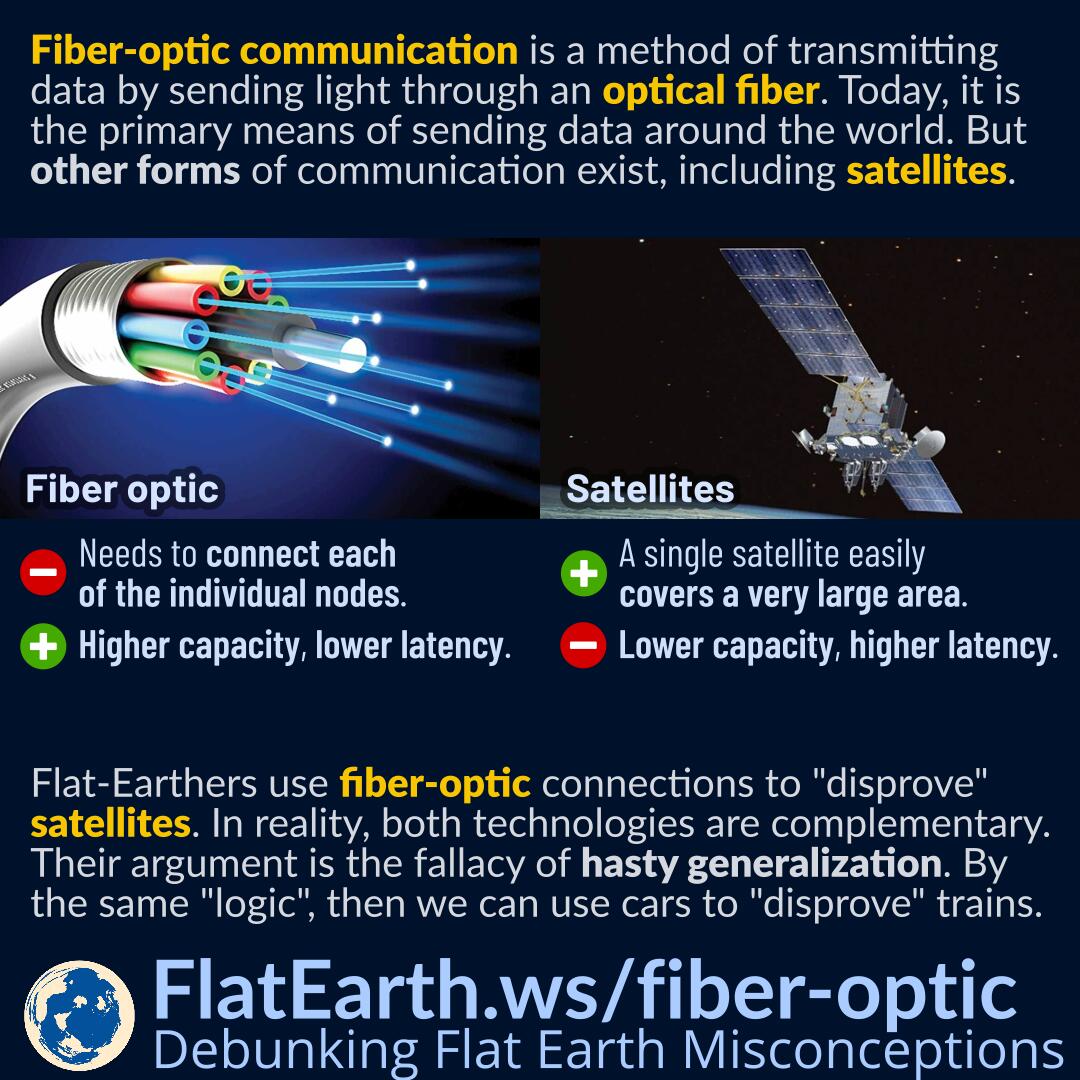Fiber-optic communication is a method of transmitting data by sending pulses of light through an optical fiber. These days, the majority of data communication involves a fiber-optic connection. However, other methods of transmitting data exist, including satellites.
Flat-Earthers use the prominence of fiber-optic communication as “proof” of the nonexistence of satellites. Such reasoning is a fallacy of hasty generalization. By the same “logic,” we can “prove” trains do not exist just by showing the existence of cars.
The advantage of fiber optics is their lower latency. A data sent from an end will reach the other end in a very short time. Low latency is essential in real-time communications or online gaming. Another advantage is its high capacity. A strand of fiber-optic theoretically can have a bandwidth up to 1000000 Gbps, far above one that of a copper wire of comparable size and far above the total bandwidth capacity of a single satellite. Moreover, undersea fiber-optic connections have hundreds or even thousands of strands of fiber optics.
Compared to satellites, the main disadvantage of fiber-optics is its point-to-point characteristic. It is necessary to connect each of the individual nodes that want to participate. On the other hand, a single satellite already covers an extensive area covering multiple countries. All it is necessary to have a link is to install a transceiver in the specific location.
In a remote location occupied by only a small population, a fiber-optic connection can be uneconomical. In such cases, a satellite connection can be much cheaper.
References
- Fiber-optic communication – Wikipedia
- How much bandwidth do satellites have? – Reddit
- Maximum theoretical bandwidth of fibre-optics – Physics Stack Exchange


